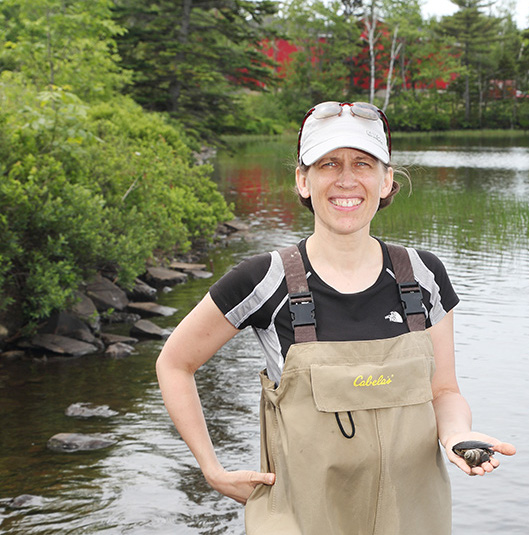It’s the International Day of Women and Girls in Science – yaaaaay! If you’ve been around this blog for more than five seconds, you’ll know that I happen to be a woman in science, which means uplifting female voices in STEM is a thing I am pretty deeply committed to. So I thought I’d celebrate today by sharing this interview with Dr. Linda Campbell of Saint Mary’s University. I worked with Campbell at SMU, and she’s an intellectual badass who’s passionate about both science and science communication.
LEC: Your work focuses on aquatic ecosystems – lakes, wetlands, and their associated life forms. What made you want to work in this field?
Campbell: I have always enjoyed being outdoors being curious about what was around me since I was a little kid. That curiosity has led me in many interesting directions, and resulted in my decision to take Biology at university. I took many types of courses, and realized that I was most concerned about freshwater issues.
LEC: A lot of your research has focused on environmental contaminants, especially those from industry. What would you say is the most important discovery you’ve made?
Campbell: Mercury is a very old contaminant used by humans for millennia around the world, but remains a modern legacy in freshwater ecosystems around the world.
LEC: What the heck is a Chinese mystery snail, and why should we be concerned about them?
Campbell: Chinese mystery snails are large freshwater snails that are native to eastern Asia and Russia. Those are popular food species for humans and are also used as aquarium species to keep fish tanks clean. Chinese mystery snails were brought to western USA in the late 1800’s, and gradually were re-introduced to many ecosystems across North America. We are currently tracking presence and abundance of Chinese mystery snails in Nova Scotia where those species are under-studied and under reported. We are concerned that the new presence of Chinese mystery snails may have impact on freshwater food webs and water quality of our lakes.
 LEC: You serve on the Board of Gallaudet University for Deaf and hard-of-hearing students and are involved in research and advocacy for Deaf academics and the Deaf community in general. How have your experiences as a Deaf scientist changed over the course of your education and career? Do you see more opportunities for Deaf students than were available to you?
LEC: You serve on the Board of Gallaudet University for Deaf and hard-of-hearing students and are involved in research and advocacy for Deaf academics and the Deaf community in general. How have your experiences as a Deaf scientist changed over the course of your education and career? Do you see more opportunities for Deaf students than were available to you?
Campbell: Being a Deaf scientist in a hearing world can often mean more work and more responsibility for me as I must constantly educate my colleagues and students, and people often look to me for answers regarding diversity and inclusion. It also means more opportunities as I meet a very wide range of people beyond the usual pool of scientists and university colleagues. As a result, I get opportunities to solve problems via lateral thinking or even via “orthogonal thinking”, e.g. thinking perpendicular to issues and finding solutions beyond the usual patterns.
Deaf scientists are rare due to implicit biases, communication barriers and scarcity of role models in scientific fields. In my field, there are only 2 aquatic environmental researchers who are Deaf in the world, with my colleague Dr. Caroline Solomon being at Gallaudet University in Washington DC. There are several graduate students in this field who are Deaf, so we are hoping it won’t be long before our numbers grow!
Capitalizing the word “Deaf” indicates that we are members of a culture and linguistic community who use sign languages and visual communication strategies, and the Deaf community is global in nature with strong networks, shared love of multiple sign languages and cultural practices. Being a member of this community is wonderful, and being able to share and talk science with another Deaf scientist in one of our sign languages is a fantastic opportunity.
LEC: What advice would you give to girls (and any other kids!) who are interested in working in STEM?
Campbell: Be curious about the world around you, read and think as much as you can, find people of all ages who share your curiosity and passion for discussing science. Mentorship is important, not only for you, but also you becoming a mentor to others, so seek opportunities to learn from others and to teach others.